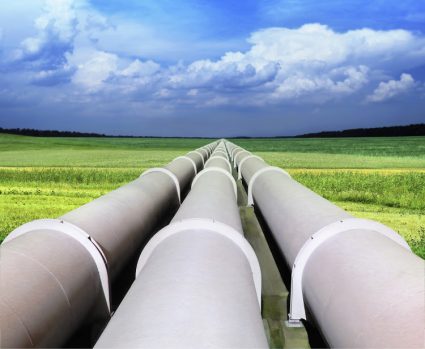After 18 years of heartbreak and misery, TC Energy is dumping its foray into oil pipelines.
TC Energy announced on July 27 it is spinning off a new liquids pipelines company from its natural gas pipelines and power generation business. The new, unnamed company will operate two shorter oil and condensate pipelines in northern Alberta. But those are chicken feed. This is all about the half-continent spanning 30 and 36 inch Keystone System/Marketlink which runs 4,324 kilometres from Hardisty, Alberta, to the U.S. Gulf Coast.
And it’s also about the projects that weren’t built – the Keystone XL expansion and the Energy East pipeline, from Hardisty to St. John, New Brunswick. Each resulted in charges exceeding a billion dollars.
TransCanada PipeLines, as it used to be known for seven decades, had been a gas pipeline system. Its mainline was one of the foundational projects of our country. But by the early 21st century, increasing natural gas production in the northeast United States due to the shale revolution meant the mainline was now operating around half capacity. What to do?
TransCanada decided it could convert one of its six mainline pipes from natural gas to oil service for at least part of the mainline. From near Winnipeg it would head straight south into centre of the U.S., eventually tying into the crucial hub at Cushing, Oklahoma (and later to the Gulf Coast).
But the mainline was still running dramatically under capacity. So TransCanada decided to convert the largest pipe in the mainline system, a 42 inch line, to oil service. They would extend it through Quebec to a port on the south shore of the St. Lawrence River and then through New Brunswick to the Irving Oil Refinery at Saint John, and its tidewater port. This, too, would have been a major nation-building project, providing an export outlet for up to 1.1 million barrels of oil per day oil from Alberta, Saskatchewan and Manitoba to the Atlantic basin. It would also displace most foreign, imported oil with Western Canadian oil.
Despite two-thirds of the pipe being already in the ground, it failed spectacularly due to opposition from governments of Quebec and Canada. The federal government’s movement of the environmental assessment goalposts ultimately killed the project for TransCanada.
But it was the Keystone XL project, by far, that was TransCanada’s worst setback imaginable. First proposed in 2008, KXL was stalled by President Obama until he eventually killed it in 2015, revived by President Trump in 2017 as one of his first acts, only to be mortally wounded in 2020 by a Montana judge then given a coup de grace by President Biden within minutes of being sworn in as president in 2021.
In May, 2016, I was the reporter who asked Donald Trump if he would approve Keystone XL and invite TransCanada to build it. He said, “Yes, I would. Totally. It should be approved.” But added he wanted a piece of the profits for the U.S.
While Obama slow-walked it for seven years before finally saying no, the pipe sat in fields across Saskatchewan, Montana, South Dakota, and Nebraska. They sat so long it became essentially worthless junk. Would you trust pipe that sat in the open for the better part of a decade to not be corroded, then pressure it up and hope it doesn’t leak like a sieve?
And that became a major problem for the original Keystone pipeline that was actually built and put into service in 2012, just as the anti-pipeline movement was rising to a fever pitch. The most recent leak, in Kansas, resulted in the pipeline being derated, reducing its capacity. That Dec. 29 spill was likely the final straw for the TC Energy board, which apparently has been considering this move for two years now.
The Keystone name, itself, has come to symbolize the anti-pipeline, anti-oil movements. The project became so toxic that TransCanada changed its name to TC Energy. And that toxicity was evident in the July 27 announcement. In the entire press release, “Keystone” is only mentioned twice – once in the list of assets, and once in the legalese. It is abundantly clear Keystone is now the word that shall not be uttered.
Indeed, the anti-pipeline movement, which found its strength fighting Keystone XL is one of the main reasons the costs of the natural gas Coastal GasLink project have more than doubled for TC Energy.
If Energy East had been built, if Keystone XL hadn’t been such a dragged out, painful experience, Canadians, as a whole, would be much better off. But only a fool would try to build a pipeline in this country now.
TC Energy may say this is about creating “shareholder value by unlocking incremental growth and enhancing efficiencies.” But it’s not hard to figure out the real reason.
Brian Zinchuk is editor and owner of Pipeline Online and occasional contributor to the Frontier Centre for Public Policy.



